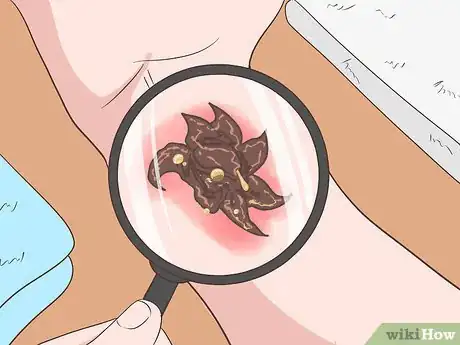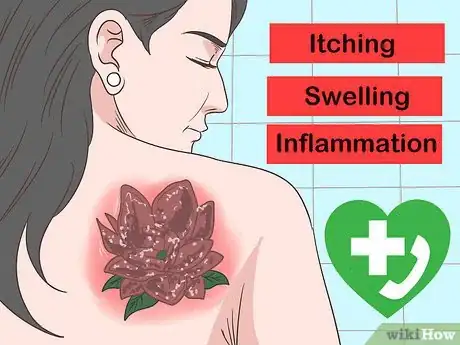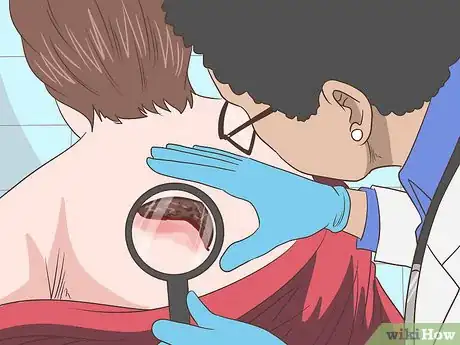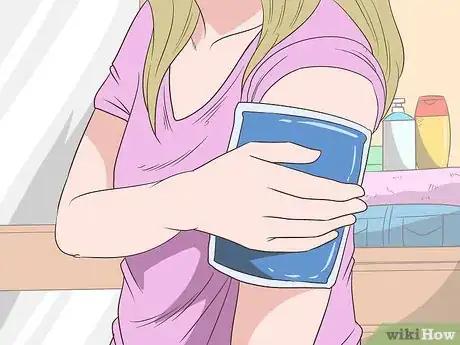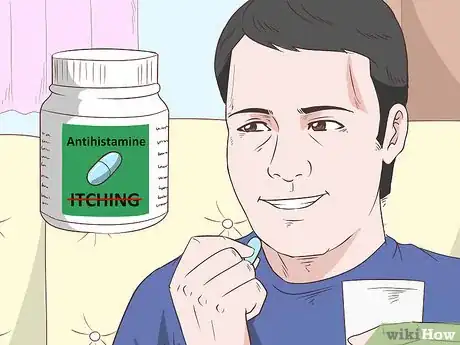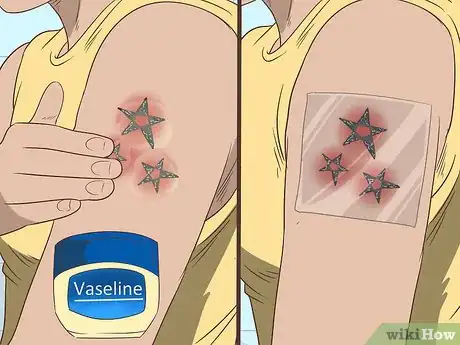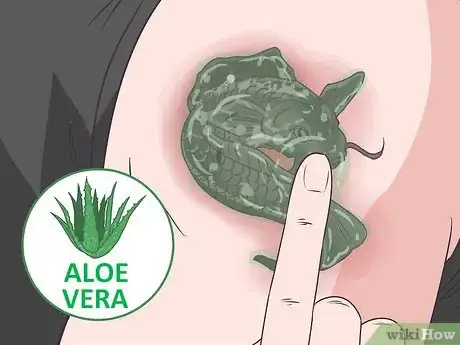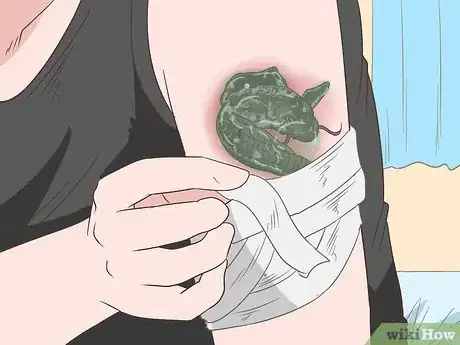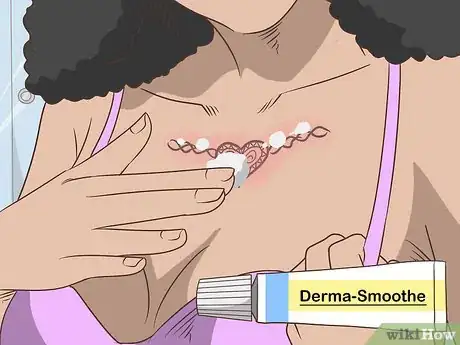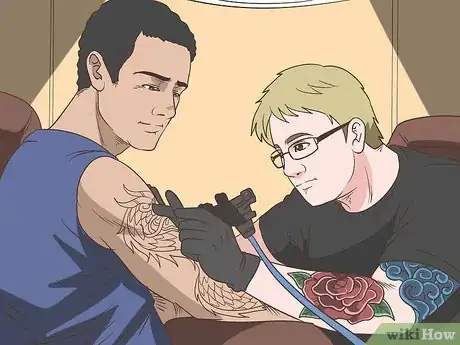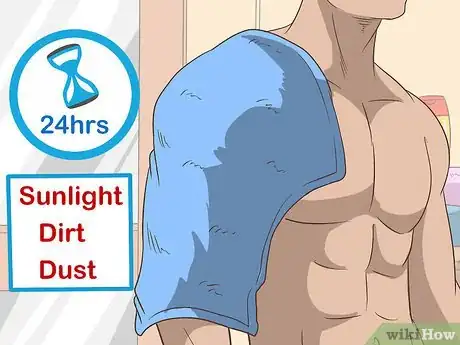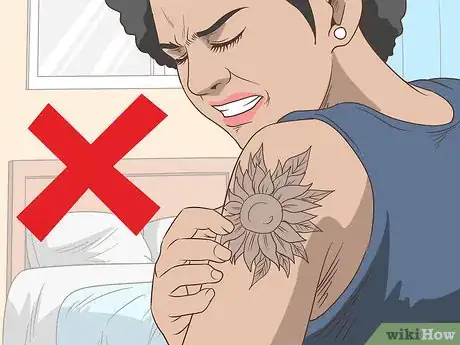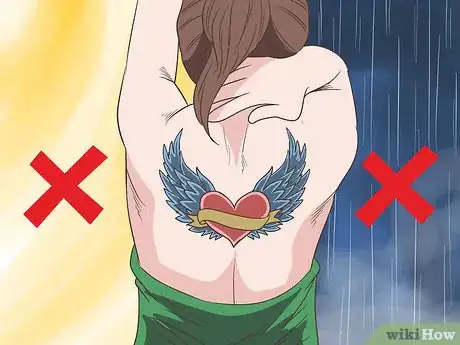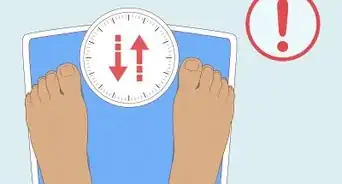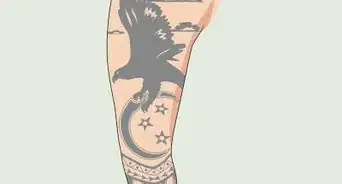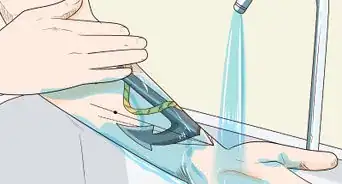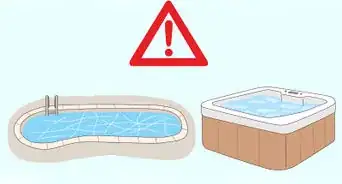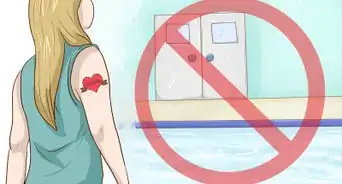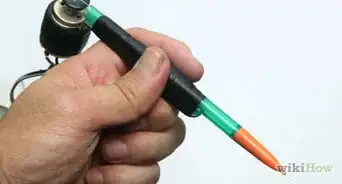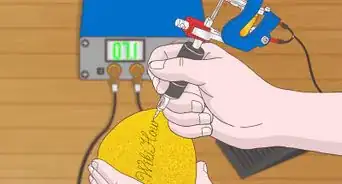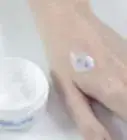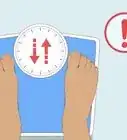This article was co-authored by Grant Lubbock. Grant Lubbock is a Tattoo Artist and Co-Owner of Red Baron Ink, a tattoo salon based in New York City. Grant has over 10 years of tattooing experience and he specializes in neo-traditional, black/grey, and color tattoos. Red Baron Ink's main goal is for each tattoo coming out of their studio to be one of a kind custom pieces that will look good throughout a lifetime.
There are 9 references cited in this article, which can be found at the bottom of the page.
wikiHow marks an article as reader-approved once it receives enough positive feedback. In this case, 100% of readers who voted found the article helpful, earning it our reader-approved status.
This article has been viewed 382,340 times.
If you just got a new tattoo or if you've had one for a long time, tattoo infections can be concerning and scary. If you think you have an infected tattoo, first confirm it's not a normal reaction to the tattooing process. Then, treat tattoo inflammation by keeping the tattoo cleaned and reducing swelling. If you have signs of infection or if inflammation or other symptoms do not improve in 2 weeks, seek out a medical professional for more personalized treatment.
Steps
Identifying the Symptoms of an Infected Tattoo
-
1Expect small amounts of blood and fluid during a new tattoo's healing process. After a new tattoo, you should expect small amounts of blood for up to 24 hours. Your tattoo should not be soaking a bandage, but a little amount of blood is normal. You should also be prepared for clear, yellow, or blood-tinged fluid to be released in small amounts for up to one week after the procedure.[1]
- You can also expect a new tattoo to be raised for a week after you get it. After about a week, your tattoo will start flaking into small flecks of colored or black ink.
- If the area begins is discharge pus, you could have an infection. Contact your doctor or dermatologist to get it checked out.
-
2Check for any fever, swelling, inflammation, or itching. Your tattoo shouldn't be painful, tender, or itchy after a week. If it is, it's probably infected.[2]Advertisement
-
3Go to the doctor immediately if you see red streaks. Red streaks are a sign that there is an infection, and it may be spreading. Occasionally, streaking can be a sign of blood poisoning, also known as sepsis. They look like red lines shooting out from your tattoo in every direction. Sepsis can cause serious illness, so seek out a doctor or medical professional immediately.[3]
- Note that general redness is not a sign of blood poisoning.
Treating Mild Inflammation at Home
-
1Apply a cold pack to reduce inflammation. Do not place ice directly onto your skin. Instead, wrap the ice in a thin towel before placing it on your skin.[4]
- Apply the ice for 10 minutes.
- Remove the ice for 5 minutes to let your arm rest.
- Repeat 2-3 times a day as needed.
-
2
-
3Use petroleum jelly and a nonstick bandage to protect your tattoo. Apply a thin layer of a petroleum jelly product like Vaseline or Aquaphor.[7] Cover your tattoo in a nonstick bandage to protect it from dirt, dust, and sun exposure. Replace both the jelly and the bandage daily.[8]
- If the bandage sticks when you try to remove it, soak the bandage with warm water before trying again.
-
4Sooth and treat a mild skin irritation with aloe vera. Aloe vera contains compounds that may ease pain and promote skin repair. Leave the tattoo and aloe vera uncovered until it dries. Reapply as needed.
-
5Let your tattoo breathe whenever possible. While it is important to cover your tattoo from dirt, dust, and sunlight, it's equally important to let your tattoo breathe. Exposing your tattoo to clean, shady air gives your body the chance to heal it on its own. When you're home, remove the bandage.[9]
-
6Go to the doctor after two weeks or if symptoms get worse. If these methods are not working to treat your inflammation, or if your symptoms got worse after you started treating them, see a doctor or dermatologist. They can take a skin biopsy or blood test to determine the best measures for treating your tattoo infection. [10]
- Your doctor may prescribe antibiotics or other medicine that you can't access without a prescription.
-
7Treat an allergic reaction with a topical steroid ointment. Unlike infections, allergic reactions are caused by ink, most commonly red ink. If you have a red rash that looks bumpy and feels itchy, you probably have an allergic reaction. Such a reaction won't go away with traditional infection treatments. Treat an allergic reaction with a topical steroid ointment until it goes away.[11]
- For a mild topical steroid ointment, try Derma-Smoothe or Aclovate Cream. For slightly stronger options, try Dermatop Cream or Cultivate Cream.[12]
- If you're not sure what strength of topical steroid ointment you should get, ask your dermatologist for advice.
Preventing Future Infections
-
1Get any future tattoos at licensed tattoo shops. Before getting a tattoo, make sure your tattoo parlor has the proper licenses and uses clean and safe methods.[13] All tattoo employees should wear gloves, and your needles and tubes should be in sterile, sealed packages before being used.[14]
- If you feel uncomfortable with your chosen tattoo shop's procedures, find a new one!
-
2Keep the skin covered for 24 hours after getting a tattoo. This helps the tattoo heal during its tenderest stage and protects it from dirt, dust, and sunlight.[15]
-
3Wear loose clothing that won't stick to your tattoo during the healing process. Clothing that rubs against a tattoo can cause an infection. If you're struggling to keep your clothing from sticking to your tattoo, cover your tattoo in petroleum jelly and a bandage for up to 6 weeks after getting it.[16]
-
4Avoid picking at your tattoo until it's fully healed. Scratching can damage your tattoo and cause infection.[17]
-
5Stay out of the sun and water for 6-8 weeks after getting a tattoo. Exposing your tattoo to water and sunlight increases the chance of infection and scarring. When showering, cover the tattoo in plastic wrap to keep it from getting wet.[18]
- Pat, don't rub, your tattoo after washing. Rubbing can cause irritation or even puncture the skin.[19]
Expert Q&A
Did you know you can get expert answers for this article?
Unlock expert answers by supporting wikiHow
-
QuestionWhat's the best ointment to put on a tattoo?
 Grant LubbockGrant Lubbock is a Tattoo Artist and Co-Owner of Red Baron Ink, a tattoo salon based in New York City. Grant has over 10 years of tattooing experience and he specializes in neo-traditional, black/grey, and color tattoos. Red Baron Ink's main goal is for each tattoo coming out of their studio to be one of a kind custom pieces that will look good throughout a lifetime.
Grant LubbockGrant Lubbock is a Tattoo Artist and Co-Owner of Red Baron Ink, a tattoo salon based in New York City. Grant has over 10 years of tattooing experience and he specializes in neo-traditional, black/grey, and color tattoos. Red Baron Ink's main goal is for each tattoo coming out of their studio to be one of a kind custom pieces that will look good throughout a lifetime.
Tattoo Artist & Co-Owner, Red Baron Ink
-
QuestionMy tattoo is yellowish in the middle, but everything else is healing properly and peeling. Is there anything I should do to resolve the yellow color?
 Jennifer Boidy, RNJennifer Boidy is a Registered Nurse in Maryland. She received her Associate of Science in Nursing from Carroll Community College in 2012.
Jennifer Boidy, RNJennifer Boidy is a Registered Nurse in Maryland. She received her Associate of Science in Nursing from Carroll Community College in 2012.
Registered Nurse
References
- ↑ http://www.webmd.com/skin-problems-and-treatments/tc/tattoo-problems-home-treatment#1
- ↑ http://www.webmd.com/skin-problems-and-treatments/tattoos-what-you-need-know#1
- ↑ http://www.medicinenet.com/red_streaks_on_the_skin/symptoms.htm
- ↑ http://www.webmd.com/skin-problems-and-treatments/tc/tattoo-problems-home-treatment#1
- ↑ https://www.drugs.com/benadryl.html
- ↑ http://www.webmd.com/skin-problems-and-treatments/tc/tattoo-problems-home-treatment#1
- ↑ Grant Lubbock. Tattoo Artist & Co-Owner, Red Baron Ink. Expert Interview. 22 October 2019.
- ↑ http://www.webmd.com/skin-problems-and-treatments/tc/tattoo-problems-home-treatment#1
- ↑ http://www.webmd.com/skin-problems-and-treatments/tc/tattoo-problems-home-treatment#1
- ↑ http://www.webmd.com/skin-problems-and-treatments/tattoos-what-you-need-know#1
- ↑ http://www.webmd.com/skin-problems-and-treatments/tattoos-what-you-need-know#1
- ↑ https://nationaleczema.org/eczema/treatment/topicals/
- ↑ Grant Lubbock. Tattoo Artist & Co-Owner, Red Baron Ink. Expert Interview. 22 October 2019.
- ↑ http://www.mayoclinic.org/healthy-lifestyle/adult-health/in-depth/tattoos-and-piercings/art-20045067?pg=2
- ↑ http://www.mayoclinic.org/healthy-lifestyle/adult-health/in-depth/tattoos-and-piercings/art-20045067?pg=2
- ↑ http://www.mayoclinic.org/healthy-lifestyle/adult-health/in-depth/tattoos-and-piercings/art-20045067?pg=2
- ↑ http://www.mayoclinic.org/healthy-lifestyle/adult-health/in-depth/tattoos-and-piercings/art-20045067?pg=2
- ↑ http://www.cnn.com/2017/06/02/health/tattoo-infected-sepsis-death-vibrio-study/index.html
- ↑ http://www.mayoclinic.org/healthy-lifestyle/adult-health/in-depth/tattoos-and-piercings/art-20045067?pg=2
About This Article
If your new tattoo is mildly infected, treat it at home by wrapping an ice pack in a thin towel and holding it on your skin for 10 minutes. Ice the infected area 2 to 3 times a day to reduce swelling and inflammation. To protect your tattoo from dust, dirt, and sun exposure, apply a thin layer of petroleum jelly to it and cover the area with a non-stick bandage. When you’re inside, let your tattoo breathe by removing the bandage and airing it out in a shady area away from sunlight. Infections might get a little itchy, in which case you should take an antihistamine like Benadryl. However, make sure to take it with a meal and never take more than the prescribed amount. If your infected tattoo doesn’t get better after 2 weeks, see a doctor to determine the best treatment options. For more help from our Medical co-author, including how to prevent any future tattoos from getting infected, read on!
